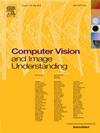Collaborative Neural Painting
IF 4.3
3区 计算机科学
Q2 COMPUTER SCIENCE, ARTIFICIAL INTELLIGENCE
引用次数: 0
Abstract
The process of painting fosters creativity and rational planning. However, existing generative AI mostly focuses on producing visually pleasant artworks, without emphasizing the painting process. We introduce a novel task, Collaborative Neural Painting (CNP), to facilitate collaborative art painting generation between users and agents. Given any number of user-input brushstrokes as the context or just the desired object class, CNP should produce a sequence of strokes supporting the completion of a coherent painting. Importantly, the process can be gradual and iterative, so allowing users’ modifications at any phase until the completion. Moreover, we propose to solve this task using a painting representation based on a sequence of parametrized strokes, which makes it easy both editing and composition operations. These parametrized strokes are processed by a Transformer-based architecture with a novel attention mechanism to model the relationship between the input strokes and the strokes to complete. We also propose a new masking scheme to reflect the interactive nature of CNP and adopt diffusion models as the basic learning process for its effectiveness and diversity in the generative field. Finally, to develop and validate methods on the novel task, we introduce a new dataset of painted objects and an evaluation protocol to benchmark CNP both quantitatively and qualitatively. We demonstrate the effectiveness of our approach and the potential of the CNP task as a promising avenue for future research. Project page and code: this https URL.
协同神经绘画
绘画的过程培养创造力和理性规划。然而,现有的生成式AI大多侧重于制作视觉上令人愉悦的艺术品,而不强调绘画过程。我们引入了一个新的任务,协同神经绘画(CNP),以促进用户和代理之间的协同艺术绘画生成。给定任意数量的用户输入笔触作为上下文或仅仅是期望的对象类,CNP应该生成一系列笔触来支持完成连贯的绘画。重要的是,这个过程可以是渐进的和迭代的,因此允许用户在任何阶段进行修改,直到完成。此外,我们建议使用基于参数化笔画序列的绘画表示来解决这个任务,这使得编辑和构图操作都很容易。这些参数化笔画由一个基于transformer的体系结构处理,该体系结构采用一种新颖的注意机制来建模输入笔画与待完成笔画之间的关系。我们还提出了一种新的掩蔽方案来反映CNP的交互性质,并采用扩散模型作为基本学习过程,以提高其在生成领域的有效性和多样性。最后,为了开发和验证新任务的方法,我们引入了一个新的绘制对象数据集和一个评估协议,以定量和定性地对CNP进行基准测试。我们证明了我们的方法的有效性和CNP任务作为未来研究的一个有前途的途径的潜力。项目页面和代码:此https URL。
本文章由计算机程序翻译,如有差异,请以英文原文为准。
求助全文
约1分钟内获得全文
求助全文
来源期刊

Computer Vision and Image Understanding
工程技术-工程:电子与电气
CiteScore
7.80
自引率
4.40%
发文量
112
审稿时长
79 days
期刊介绍:
The central focus of this journal is the computer analysis of pictorial information. Computer Vision and Image Understanding publishes papers covering all aspects of image analysis from the low-level, iconic processes of early vision to the high-level, symbolic processes of recognition and interpretation. A wide range of topics in the image understanding area is covered, including papers offering insights that differ from predominant views.
Research Areas Include:
• Theory
• Early vision
• Data structures and representations
• Shape
• Range
• Motion
• Matching and recognition
• Architecture and languages
• Vision systems
 求助内容:
求助内容: 应助结果提醒方式:
应助结果提醒方式:


